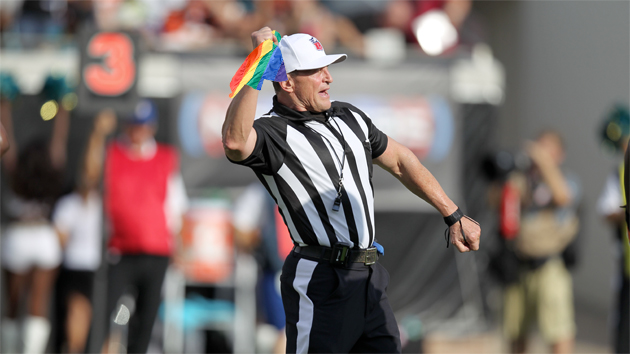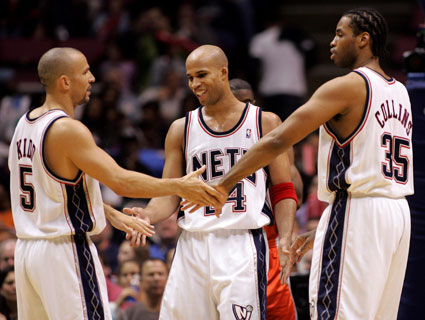The NBA will have its first openly gay active player. Jason Collins, who came out in Sports Illustrated last April, signed a 10-day contract Sunday with the Brooklyn Nets. When Collins steps on to the court, it will be the first time an athlete who is widely known to be gay will have played in an NBA, NFL, NHL, or MLB game.
Collins announced he was gay when, after a slew of injuries, he wasn’t on any team’s roster and he remained unsigned until the Nets recently reached out to him. Collins will likely make his first appearance in the Nets’ Sunday night game against the Los Angeles Lakers.
RT to welcome @jasoncollins34 to Brooklyn! #Nets pic.twitter.com/D05R9td9cx
— Brooklyn Nets (@BrooklynNets) February 23, 2014
Collins’ NBA return comes as former University of Missouri football player Michael Sam is working out at the NFL Combine and preparing for the league’s May draft. Sam, who came out in February, is looking to be the first openly gay player in the NFL. John Amaechi became the first former NBA player to come out in 2007, though he did so after his five-season career was over. Glenn Burke, who played baseball for the Los Angeles Dodgers and Oakland Athletics from 1976 to 1979, may have been the first openly gay player in any major American professional sport—though reporters at the time kept Burke’s sexuality under wraps and the Dodgers even tried paying him to take part in a sham marriage. (Burke refused.)
Collins received the public backing of many NBA stars when he came out last year. That support continued during the signing process, with new teammate Kevin Garnett telling reporters, “I think it’s important that anybody who has the capabilities and skill level [gets] a chance to [do] something he’s great at. I think it would be bias, and in a sense, racist, if you [were] to keep that opportunity from a person.” Collins will wear jersey number 98 with the Nets in honor of Matthew Shepard, the University of Wyoming student whose brutal 1998 beating and death made him a gay rights martyr.















